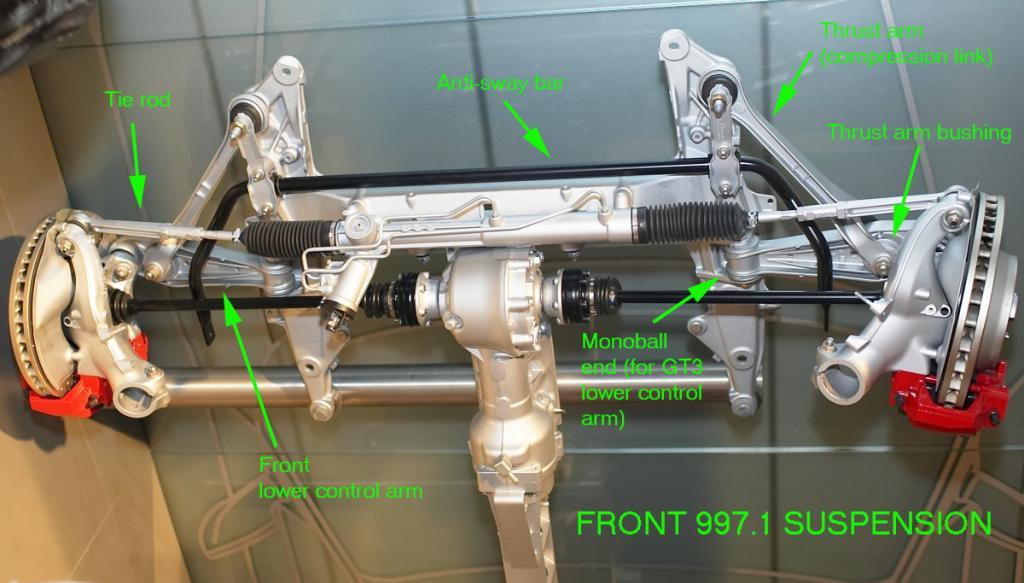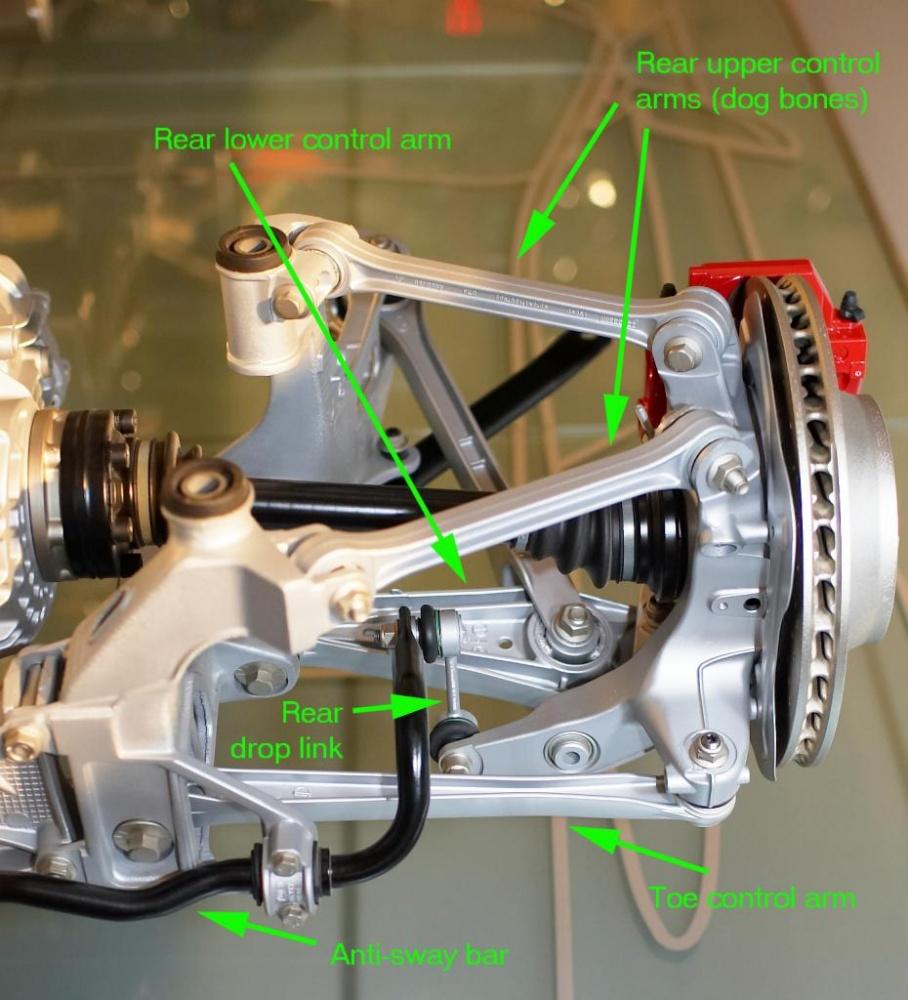You must be logged in to rate content!
3 minute(s) of a 612 minute read
6-8-2013
Repost, now with pictures!!
Suspension Mods Overview:
Suspension mod is easier to understand if you categorize the modifications. Then all of sudden, things will seem so simple ;-) and not so intimidating. I will arbitrarily create 4 categories:
1. Stiffer springs: this is the single most important mod in the Turbo and will transform the car. It is accomplished by using lowering springs (I recommend coilover but lowering springs serve their purposes) or using coilover , meaning springs + shock absorber, such as those made by Bilstein or KW/JRZ/Moton/etc. Positives: Stiffer and lower are almost always better in a sports car: less weight transfer (body roll, dive and squat), more precise response. Negatives: Ride versus handling trade-off is forever present - the law of physics. As handling improves, ride will suffer. Don't use Moton or JRZ because they are too stiff for street driving.
2. Alignment: involves toe, caster, camber. For all practical purposes, all you need to worry about in the Turbo is to increase front negative camber. Stock is -.8 or whatever, you want to increase this to minus 1.1 or so (the max possible). Positives: Negative camber increases cornering force/traction of the tire (allows you to corner faster), decreases understeer which is an inherent problem with AWD 997.1 Turbo (complicated, pls just trust me this is the case). Negatives: Excessive & uneven tire wear and straight-line traction/acceleration could be affected adversely if over-done.
3. Stiffer "other" components: This would fall into 2 categories:
A. Sway bar: used to fine tune the system, in particular the understeer/oversteer behavior. After market sway bars are not only stiffer, they have adjustable stiffness. In the AWD Turbo with inherent understeer trait, the recommended setting is soft front, stiff rear, to decrease understeer. Note that sway bar on stiff setting could have major effect on the comfort of your ride (very un-comfortable). Positives: Decrease body roll, adjust understeer/oversteer, stiffer front sway bar makes steering firmer and feel more precise. Negatives: Decreases ride comfort.
B. After market suspension links that use solid metallic bushing/joint, in place of stock rubber/neoprene bushing/joint. The links include rear upper links (dog bones), toe control link, thrust arm bushing, front camber plate, drop links, etc. Positives: Solid links increase precision and make cars feel more "planted"/precise. Negatives: Increase noise, vibration, harshness, some more than others. Also, these are wear-and-tear items and need to be checked periodically and replaced when the joints become loose (metallic joints/links don't last as long as rubber/neoprene joints/links).
4. Tires: Don't under-estimate this major component of suspension system, and never race another car that has superior tires! This means: R compound tires such as Michelin Cup or Pirelli Corsa. Positives: have inherent advantages: stickier rubber, stiffer wall. Negatives: Dangerous on wet roads (no traction, aqua-plane), takes time to warm up, noisy & stiff especially when old.

